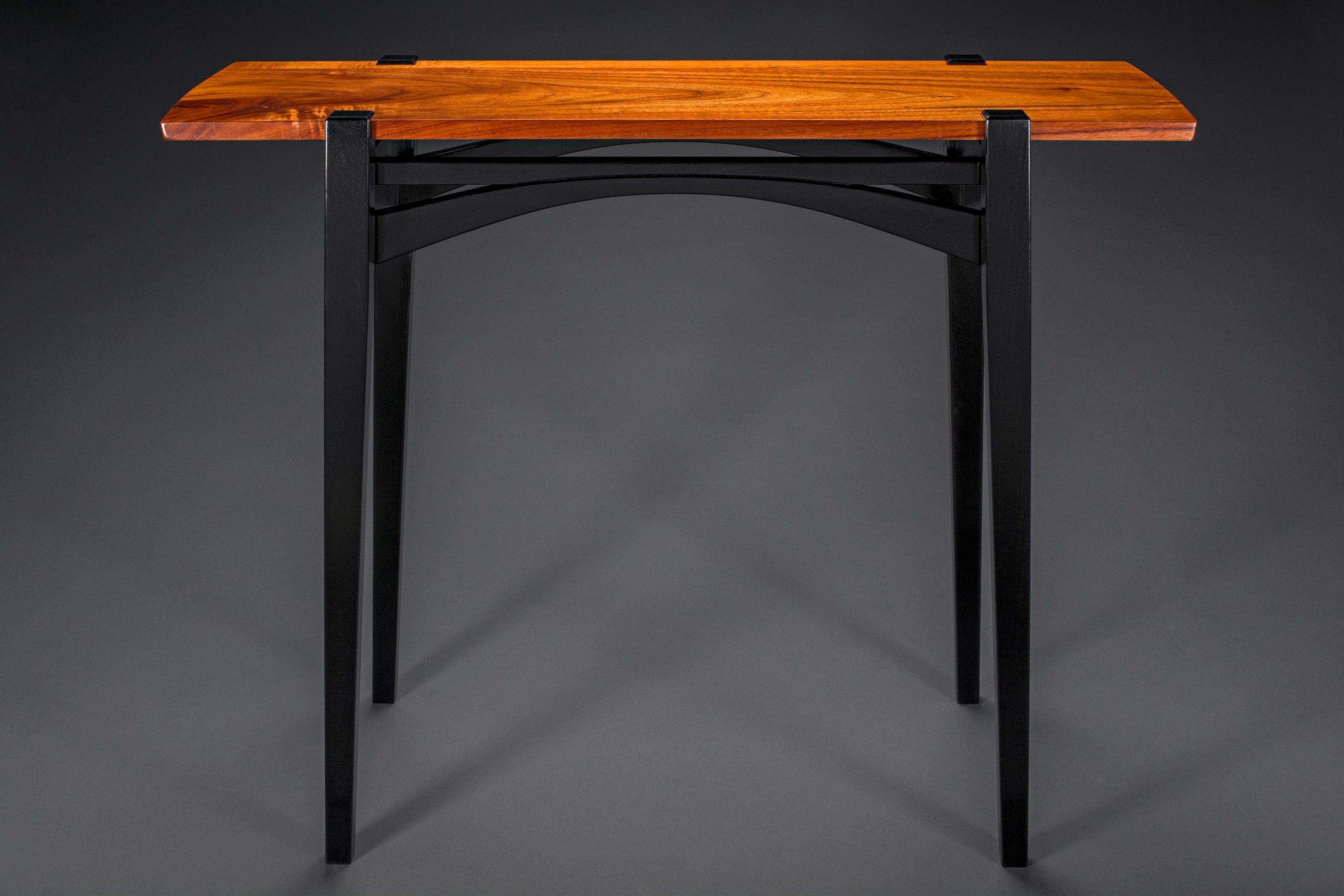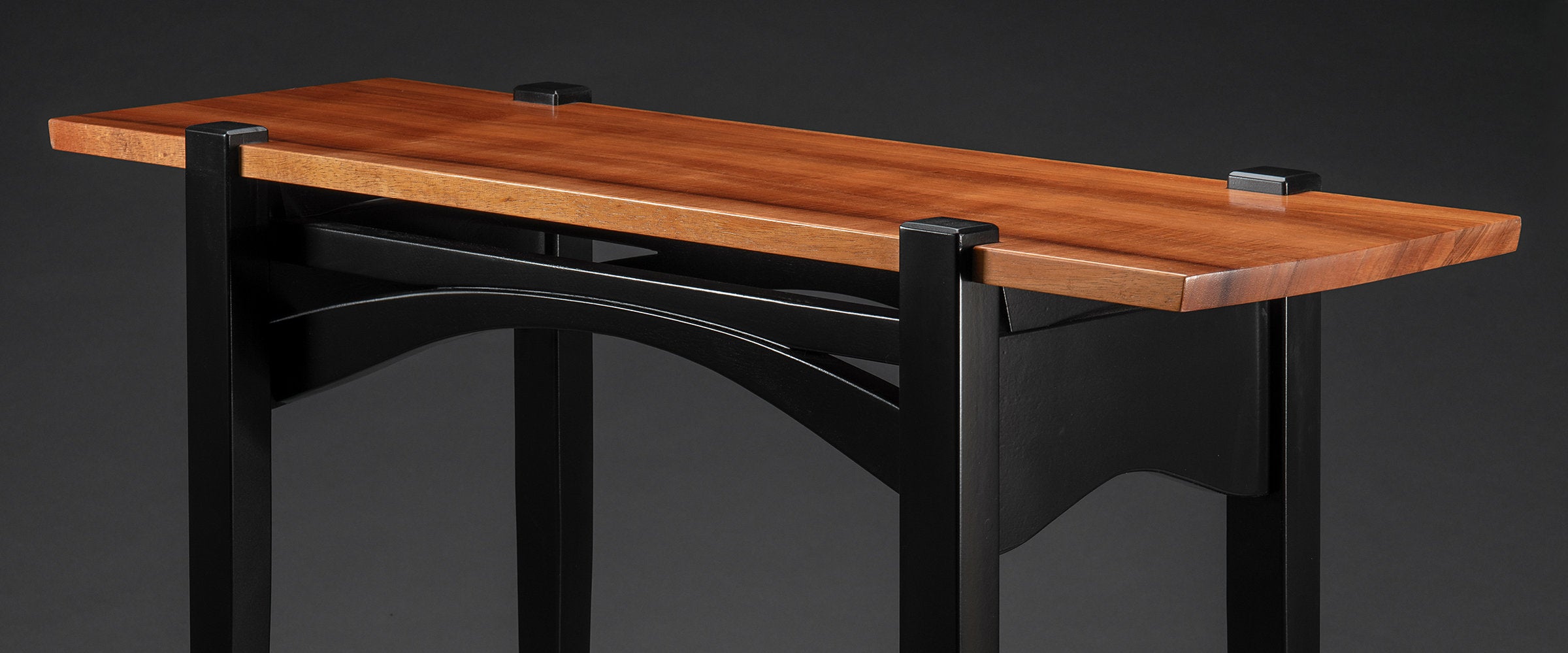



Tony Casper
Tony Casper Designs
Tony grew up a block away from Lake Michigan's western shore, where he spent a lot of time absorbing the beauty and design of plants, trees, and nearby waves caressing the meandering beach. He loved the trees the most. Today, he strives for some of his tabletops to appear to float on their bases, like the boats he once restored. He uses live edges at times, which have a fluid look that can resemble driftwood.
Casper's furniture begins with a strikingly beautiful top board that has a certain "movement" in the grain, which is also known as chatoyancy. The other boards used to complete the piece are selected for color and sometimes contrast. He uses traditional joinery techniques—mortise and tenon as well as dovetails.
Casper started making furniture when he was ten years old. He had a couple of patient and skilled mentors, who taught him the use of tools as well as the love of local furniture woods, particularly walnut and butternut. During high school summers, he worked for a boatbuilding and repair shop in nearby Pewaukee, Wisconsin, where he repaired mahogany-hulled Chris-Craft boats. Since then, he has been primarily self-taught.


